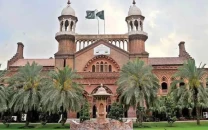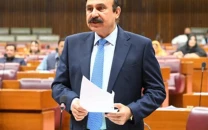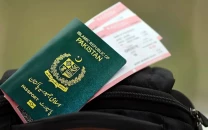Five new Pindi tehsils on the cards
Revenue dept argues size of current tehsils hinders seamless delivery of services

Rawalpindi's Revenue Department has proposed the creation of five new tehsils in the Rawalpindi Division, deeming it an urgent necessity.
The written proposals, submitted to the Punjab government, suggest these tehsils be established in the upcoming fiscal year 2025-26.
Legal and administrative directives have already been issued to facilitate the process. According to the proposals, two new tehsils are planned for Rawalpindi District, while Attock, Jhelum, and Chakwal districts will each receive one.
This follows a circular issued three months ago by the Punjab government to deputy commissioners across all 42 districts, including Rawalpindi Division, seeking recommendations on the feasibility of additional tehsils. Responses from most districts highlighted the need for one to two new tehsils, prompting the government to move forward with plans for at least one new tehsil per district.
The deputy commissioner of Rawalpindi, in a communication to the senior member of the board of revenue, emphasised the need for two additional tehsils in Rawalpindi District.
He noted that the district's size makes it challenging to deliver basic services efficiently. Currently, Rawalpindi District comprises seven tehsils including Rawalpindi, Kahuta, Kallar Syedan, Gujar Khan, Taxila, Saddar, and Cantonment.
Adding two more tehsils would increase the total to nine. Previously, Rawalpindi District also included the tehsils of Murree and Kotli Sattian. However, these were incorporated into Murree District when it was declared a separate administrative unit.
The Punjab government is also considering the creation of at least two new districts alongside the tehsil expansions, which are expected to streamline service delivery and administrative efficiency in the region.
The proposal for the creation of additional tehsils comes in response to the growing population and the increasing demand for better governance and services in the Rawalpindi Division.
With the region's urbanisation and expansion, the existing tehsil infrastructure has struggled to keep pace, leading to delays in service delivery and administrative bottlenecks. The establishment of new tehsils aims to decentralise administration, reduce workload, and ensure that resources are distributed more evenly across the region.
In addition to improving governance, these new tehsils are expected to facilitate better access to essential services such as healthcare, education, and legal matters for residents living in more remote or densely populated areas.
The move is also seen as a step towards addressing the region's administrative challenges and promoting balanced regional development. As the fiscal year 2025-26 approaches, stakeholders are eager to see how these proposed changes will impact the day-to-day lives of Rawalpindi's residents and whether the plan will be successfully implemented across all five districts.




















COMMENTS (1)
Comments are moderated and generally will be posted if they are on-topic and not abusive.
For more information, please see our Comments FAQ